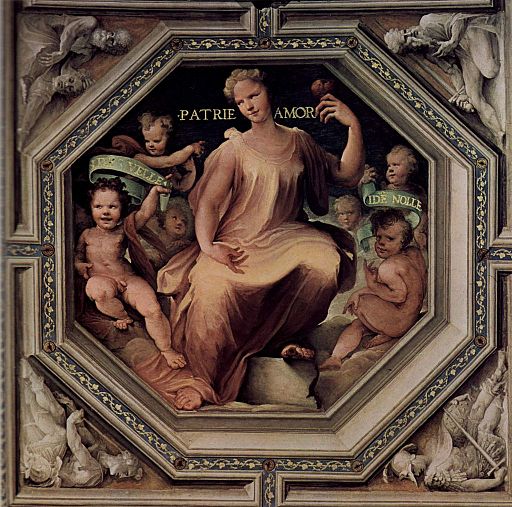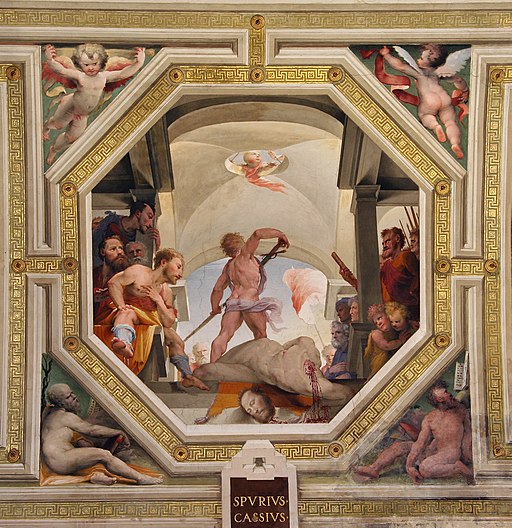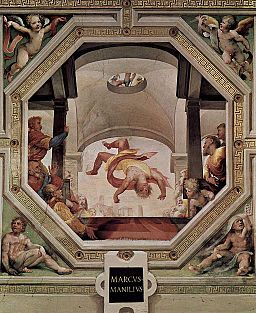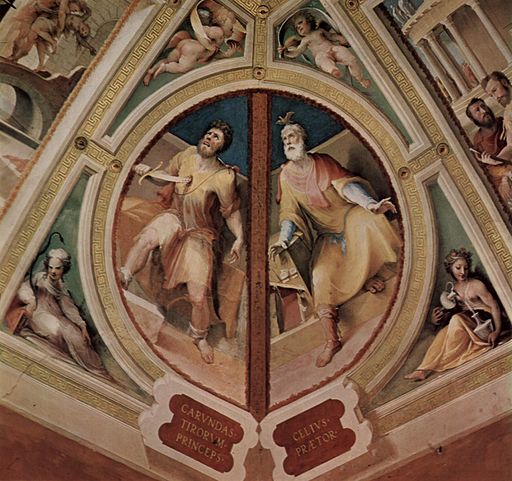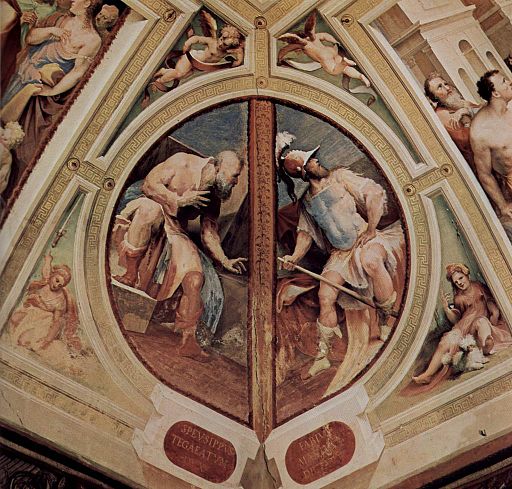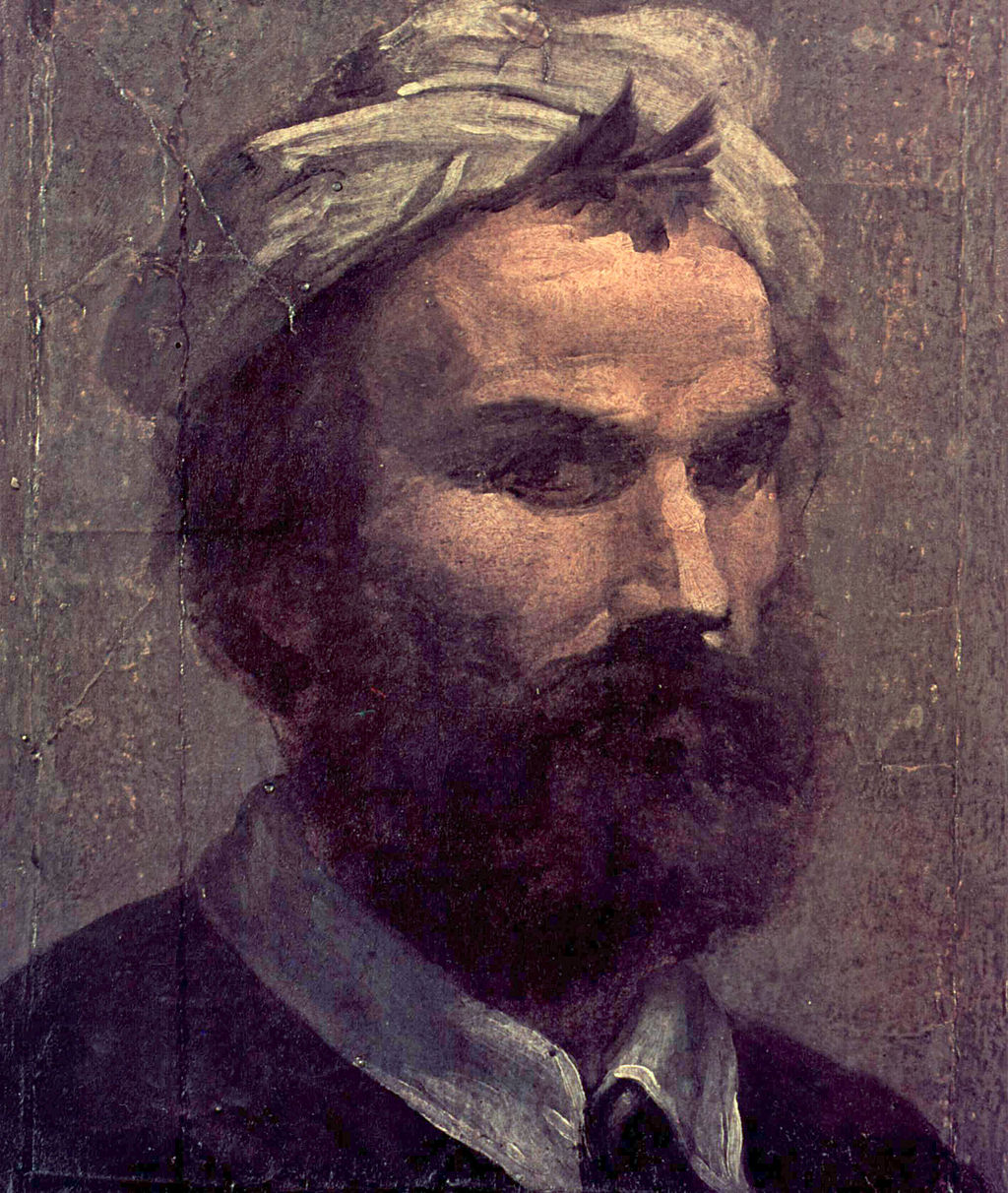In the second half of the quattrocento artists, destined to noticeably change the figurative culture through the more “modern” forms of the Renaissance, emerge in Siena: in Sculpture Donatello’s presence is very important; he is the artist who clearly caused the emergence of individual masters such as Vecchietta, Francesco di Giorgio, Giovanni di Stefano, Giacomo Cozzarelli.
These artists drew from the Florentine master the ability of shaping the matter with subtle plastic vibrations and at the same time gave to the represented figures the intensity of emotions rendered with dramatic participation. In Painting, thanks to the works of Vecchietta, Matteo di Giovanni and above all Francesco di Giorgio and his assistants Neroccio and Pietro Orioli, we see a transition from the abstract values of formal elegance to the more conscious search for spatial and chromatic standards.
The figures are coherently placed within the settings with spatial accuracy and rigorous perspective. Beccafumi’s initial acceptance of Michelangelo’s classicism turned itself, already by the 1520s, into a more visionary and eccentric way of painting which allowed the artist to become one of the main figures of the Italian mannerism.
|
The abundance of the pictorial experience that the lively town of Siena managed to prompt in the last part of the fifteenth and the beginning of the sixteenth-centuries, is important not only for the quantity produced but for its quality too. Evidence of this is the flourishing of pictorial cycles, sculptural works of major relevance, architectural and urban planning, the creation of decorative objects for the living spaces of the great patricians, and the production of traditional paintings for public and private worship.The two main focal points of Siena representing the civil power on one hand (Palazzo Pubblico and the Spedale di Santa Maria della Scala) and the religious power on the other (The Cathedral) maintain the most relevant examples of that cultural change.
Within the Palazzo Pubblico the sumptuous consistorial hall was decorated by Domenico Beccafumi with scenes of the civic virtues, project that lasted from 1529 to 1535. Emphatic mannerism, vivid colours and daring illusionistic representations attract the spectator to one of the most fascinating pictorial cycles of the time.
Not far way on the Pellegrini street which leads to the baptistery Beccafumi himself, developed a complex series of images with characters from mythology and ancient history, commissioned by the proprietor Marcello Agostini. The cycle is considered as one of the highest expressions of the italian cinquecento, one of the "secret" places in a palace that is still a private property and it will open to the general public in the course of the exhibition, rare chance not to be missed. Almost in front of it, Palazzo del Magnifico, residence of Pandolfo Petrucci, Siena's ruler, at the time sumptuous patrician residence, furnished by the most important artists present in Siena at the end of the fifteenth-century and of which only the architectural structure remains after it was stripped off of all its decorations and furniture during the XIX century.
The two main focal points of Siena representing the civil power on one hand (Palazzo Pubblico and the Spedale di Santa Maria della Scala) and the religious power on the other (The Cathedral) maintain the most relevant examples of that cultural change.
Within the Palazzo Pubblico the sumptuous consistorial hall was decorated by Domenico Beccafumi with scenes of the civic virtues, project that lasted from 1529 to 1535. Emphatic mannerism, vivid colours and daring illusionistic representations attract the spectator to one of the most fascinating pictorial cycles of the time.
Not far way on the Pellegrini street which leads to the baptistery Beccafumi himself, developed a complex series of images with characters from mythology and ancient history, commissioned by the proprietor Marcello Agostini. The cycle is considered as one of the highest expressions of the italian cinquecento, one of the "secret" places in a palace that is still a private property and it will open to the general public in the course of the exhibition, rare chance not to be missed. Almost in front of it, Palazzo del Magnifico, residence of Pandolfo Petrucci, Siena's ruler, at the time sumptuous patrician residence, furnished by the most important artists present in Siena at the end of the fifteenth-century and of which only the architectural structure remains after it was stripped off of all its decorations and furniture during the XIX century.
|


